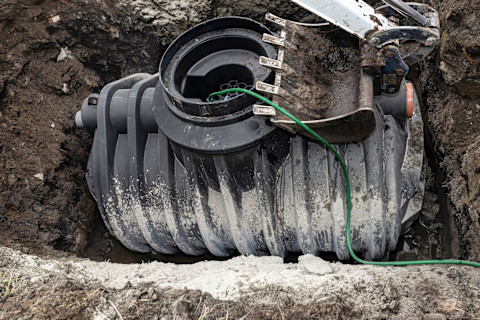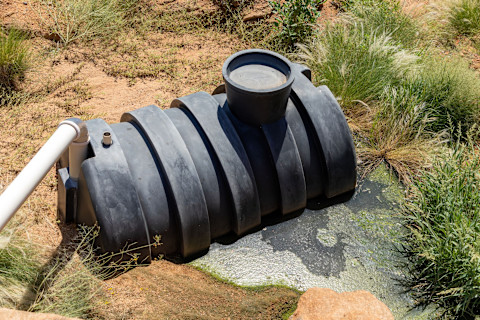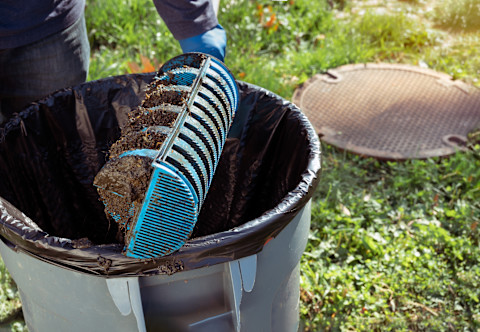How Does a Septic Tank Work? A Homeowner's Guide to Understanding Your Waste System
Updated on

Understanding Septic Systems: How They Work and Maintenance Essentials
Discover the essential components of a septic tank and learn how household septic systems work to keep your home functioning smoothly. By understanding what goes into a septic tank, you'll be equipped to maintain your system effectively. Read on to find out more!
In this article, we will cover the following topics:
- Everything You Need to Know About Septic Systems
- Key Components of a Septic Tank
- How Does a Septic Tank Work?
- Household Variations
- What Goes Into a Septic Tank
- Signs of a Failing Septic System
- Septic System Maintenance Basics
- Discover Vetted Septic Tank Experts Near You with MyBuilder
- Common Questions
Everything You Need to Know About Septic Systems
Septic systems are designed to treat and dispose of household wastewater on-site, ensuring effective waste management and environmental protection. A common misconception is that septic systems require little to no maintenance; however, regular upkeep is essential to their longevity and performance. By maintaining these systems properly, homeowners can avoid costly repairs and protect the environment.
Key Components of a Septic Tank
A septic tank is a key part of on-site wastewater treatment systems, and understanding its main components can help ensure it functions efficiently. Here are the primary parts of a septic tank and their functions:
- Inlet Pipe: Transfers wastewater from the household plumbing into the septic tank. It is essential for the continuous flow of waste into the tank.
- Tank: Serves as the main chamber where wastewater separates into solid sludge, effluent, and a scum layer. The tank provides space for the natural breakdown of solids through bacterial processes.
- Outlet Pipe: Carries the treated effluent from the tank to the drain field. It is vital for ensuring that only pre-treated liquids leave the tank.
- Baffles: These are installed at the inlet and outlet pipes to prevent scum and solids from moving out of the tank and potentially clogging the drain field, thereby maintaining the system's efficiency.
HomeStars Tip: Regularly inspecting these components helps in early detection of problems, minimising the risk of system failures. If you’re budgeting for maintenance, repairs, or even a full replacement, check out our septic tank cost guide for an overview of typical expenses.
How Does a Septic Tank Work?
Understanding how a septic tank works can help you manage and maintain your system efficiently. Here's a step-by-step breakdown of the process:
1. Wastewater enters the tank: Wastewater flows into the tank via the inlet pipe, carrying all household waste.
2. Separation occurs: Inside the tank, the contents settle into three distinct layers. Solids become sludge at the bottom, oils and grease form a scum layer on top, and the middle layer consists of liquid known as effluent.
3. Decomposition happens: Anaerobic bacteria break down the solid waste into sludge, reducing its volume.
4. Effluent exits the tank: The separated effluent exits through the outlet pipe.
5. Effluent enters the drain field: Effluent is then distributed into the leach field through the outlet pipe for further purification.
6. Natural filtration occurs: The soil in the leach field absorbs and filters the effluent, protecting the environment by removing harmful pathogens and chemicals.
What Happens After Septic Tank Treatment?
After wastewater is treated in the septic tank, the effluent's journey continues. The liquid waste discharges into the leach field, where it undergoes further natural purification. Here, the soil acts as a filter, removing pathogens and nutrients that can contribute to groundwater pollution.
This process not only safeguards local water sources but also supports environmental health by preventing contamination. Proper maintenance ensures the effective functioning of this environmentally important system.
Note: Ensuring your septic tank operates effectively prevents untreated waste from entering the leach field, which can lead to soil saturation and potential system failure.
Save time, energy, and costs by hiring a professional tradesperson for your septic tank needs—simply post your job on HomeStars to compare quotes and ensure the best service. Click here to find a recommended plumber near you and make the smart choice today!
Schedule your septic tank cleaning now
How Household Septic Systems Work: Common Variations
Household septic systems are essential for effectively managing wastewater in areas without central sewage systems. While the basic function of capturing and treating wastewater remains consistent, variations exist to accommodate different environments and household needs.
Conventional Septic System: Best suited for properties with enough space and good soil conditions. Relies on natural soil absorption to treat wastewater.
Aerobic Treatment Unit (ATU): Introduces air into the tank to promote faster, more efficient waste breakdown. Often used on smaller lots or in areas with poor soil drainage.
Sand Filter System: Uses additional filtration layers, making it effective in areas with high groundwater levels or poor-quality soil.
HomeStars Tip: Always consider your property’s environmental conditions and local regulations when choosing a septic system type. Each option differs in cost, complexity, and long-term maintenance needs. If you’re also thinking about improving water quality inside your home, visit our water softener cost guide for insights on installation and pricing.
What Goes Into a Septic Tank: Dos and Don'ts
Understanding what you can and cannot put into a septic tank is crucial for maintaining its efficiency and longevity. Only specific items are appropriate for disposal in septic systems.
Safe to Flush: Human waste, toilet paper, and small amounts of household cleaning products. These decompose naturally and won’t disrupt the system.
Avoid Non-Biodegradable Items: Materials like plastics, wipes, or paper towels can block pipes and interfere with septic function.
Keep Out Grease and Chemicals: Oils, fats, paints, and harsh chemicals can damage the tank and clog the drain field.
Prohibited Items: Pharmaceuticals, feminine hygiene products, and pesticides may harm the biological balance of the tank and risk contaminating local water sources.
Home Systems Tip: If you're also managing other basement or below-ground systems like sump pumps, it helps to understand installation and repair costs up front. Check out our sump pump cost guide to compare what you might pay.
Signs of a Failing Septic System

Understanding the signs of a failing septic system is important for preventing costly repairs and environmental impacts. Recognising these signs early can help address issues before they escalate.
- Persistent foul odours around your property hint at a malfunction.
- Slow drainage sinks, bathtubs, or toilets taking longer than usual to empty.
- Unusual patches of lush or greener grass above the drain field might indicate excess effluent leakage.
- Standing water or saturated areas in the yard near the septic tank or drain field.
- Gurgling sounds coming from plumbing systems during flushing or draining can signal system distress.
HomeStars Tip: At the first sign of these issues, take immediate action by consulting a septic system professional. Early intervention could save you substantial repair costs.
Septic System Maintenance Basics

Maintaining a septic system is essential for its longevity and efficiency. Regular inspection is critical; it's recommended to have professionals inspect your septic system every three years.
-
Water Conservation: Using water efficiently helps prevent system overload. Install low-flow fixtures and repair leaks promptly.
-
Protect the Leach Field: Keep heavy vehicles and equipment away from the septic system and leach field to avoid structural damage.
-
Maintain System Efficiency: Consistent care ensures your septic system remains an effective way to manage wastewater while protecting your property investment.
Discover Vetted Septic Tank Experts Near You: Start with MyBuilder Today!
Ensure your septic tank is in expert hands with trusted septic tank professionals from HomeStars. Don't leave the health of your home to chance—post your job on MyBuilder now for peace of mind and quality service. Take the first step towards a seamless septic solution today!
FAQ: Common Questions Readers Ask About Septic Tanks
How often should routine maintenance be performed on a septic tank?
Routine maintenance on a septic tank should generally be conducted every 3 to 5 years. This can vary based on factors such as the size of your household, the septic tank size, and usage patterns. Regular maintenance typically includes pumping the tank to remove solids and sludge, which helps prevent blockages and system failure. Checking with a certified septic tank professional can provide tailored advice based on specific circumstances.
What are common issues that can affect the function of a septic tank and how can they be resolved?
Common issues affecting a septic tank include blockages, leaks, tree root intrusion, and surface water flooding. Blockages can often be resolved by regular pumping and avoiding non-biodegradable materials being flushed. Leaks may require professional inspection and potential repair or replacement of components. Control tree roots by maintaining adequate distance between the septic tank and large trees. To prevent flooding, landscaping should ensure proper drainage and water diversion away from the system. Regular inspections can help identify and mitigate these issues early.
Are there significant environmental benefits to using a septic system?
Septic systems offer significant environmental benefits by processing domestic wastewater locally, reducing the burden on municipal sewage treatment facilities. The natural filtration process within a septic system reduces pollutants, aiding groundwater recharge. Septic systems are beneficial in less densely populated areas where extensive sewage infrastructure might not be viable, offering a sustainable and cost-effective wastewater management solution. Properly maintained septic systems help preserve local ecosystems and water quality.
Discuss your job with pros so they can accurately estimate the cost.